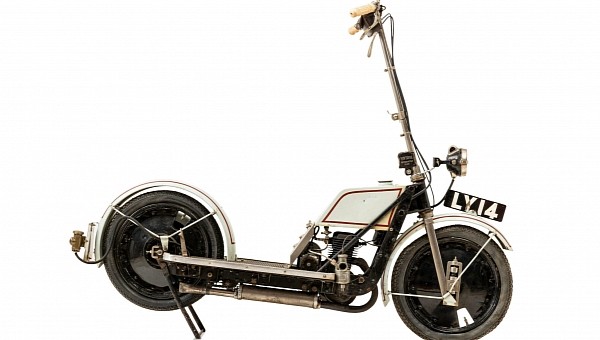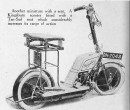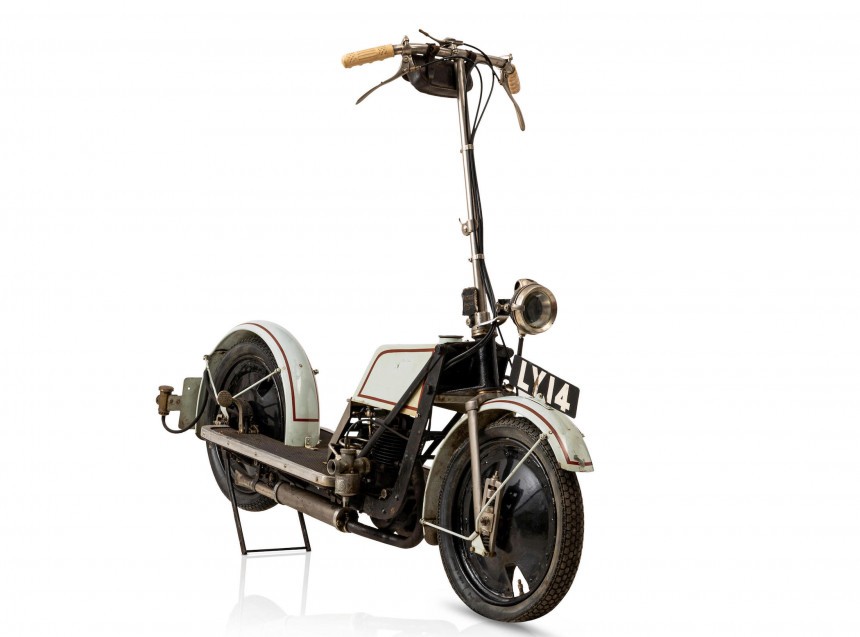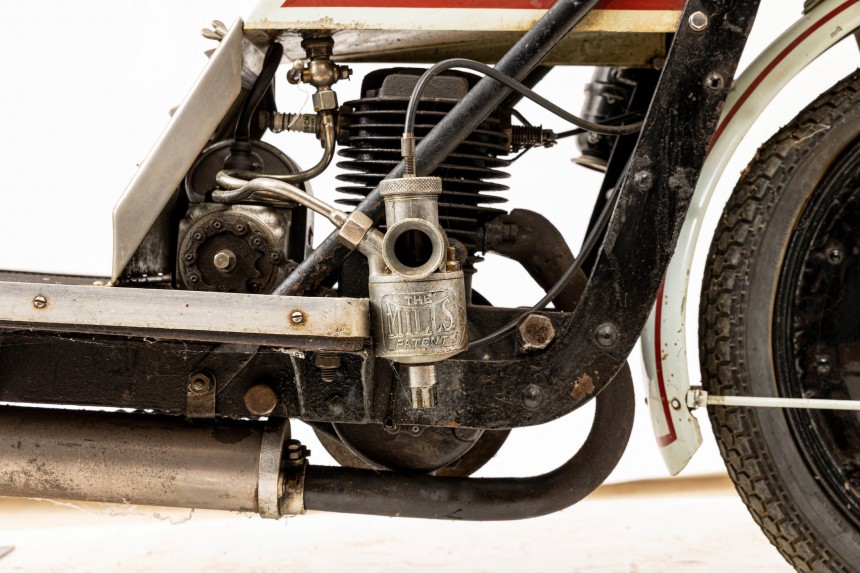While some may believe the scooter is an invention of the modern micromobility era, the truth is that the concept of scooters has been around for almost as long as the automobile. This misconception might be due to the fact that the depth of common knowledge when it comes to vintage scooters doesn’t go much further than the Vespa and Lambretta.
Though there isn’t a consensus regarding its origin, the history of the standup or kick scooter stretches back to the late 19th century in Europe. Targeted initially at children, scooters were later seen as a low-cost alternative to automobiles as they promised to revolutionize short trips and work commutes with their easy maneuverability, fuel efficiency, and compact design which made it very easy to park.
Boasting a form factor that hasn’t suffered much change over the years, the scooter later gained a motor, with one of the most popular motorized scooters being the Autoped invented by Arthur Hugo Cecil Gibson, a model that sold in great numbers between 1915 and 1922.
After World War I wreacked havoc in early 20th century and there was a shortage of materials like steel and rubber, many manufacturers in both Europe and the U.S. started developing and producing gasoline-powered and electric scooters due to their extremely efficient use of materials and fuel.
A lesser known model developed after WWI is the Kingsbury motor scooter produced by Barningham Brothers' Kingsbury Engineering Co Ltd. This was a scooter of the original “stand-up” type and was introduced in 1919 as a means to ensure cashflow for the company after the war.
Before shifting to two-wheelers like scooters and motorcycles, Barningham Brothers' Kingsbury Engineering Co Ltd. was among the companies that built the Geoffrey de Havilland-designed Airco DH.6 training aircraft for the Royal Flying Corps. It is said to have produced around 150 aircraft during the WWI.
The Kingsbury motor scooter featured a simple steel platform frame with a wooden footboard, an assembly that was flexible enough to provide sufficient springing and absorb mild road shocks.
It was powered by a 2¼ hp two-stroke engine mounted at the forward end of the frame, right behind the front wheel. It produced, you guessed it, 2¼ horsepower. Manufacturers used disc-type wheels and mounted the fuel tank atop the engine. Power was sent to the rear wheel via a chain drive, while the front wheel was sprung by simple suspension.
The stand-up scooter was also equipped with two brakes that both acted on the rear wheel. One of them was operated by hand, while the other by foot.
As the name of the scooter implies, riders had to stand, but a Tan-Sad sprung seat was later introduced as an option, greatly improving the scooter’s practicality.
The simple design and the efficiency in terms of materials needed to make a Kingsbury scooter put them on the map as a great mobility solution in the post-WWI era.
In 1920, Kingsbury Engineering Co Ltd added a lightweight motorcycle to its lineup. The new two-wheeler was conventional in design and was fitted with the same 254cc two-stroke engine, though it featured a two-speed transmission by chain and belt through the company’s own gearbox. In 1921, interest in stand-up scooters began to wane and the original Kingsbury scooter went out of production.
The particular example you see in the photos above is a very rare 1920 Kingsbury unit that was acquired by the current owner in 1994 at an UK auction. It hasn’t benefitted from service or any restoration work for many years, which is obvious in its appearance, as signs of rust and patina are visible throughout.
Nevertheless, the damage is not that extensive, so the scooter could make a great restoration project if someone were interested in taking it out to the road again. Though considering how cheap scooters are today, it is more likely to only pique the interest of serious collectors.
Besides the above-mentioned features, other noteworthy components of this particular unit include a P&H headlamp, a Lucas rear lamp, a Mills carburettor, as well as a BTH magneto and a VMCC badge.
Given the short production run of the Kingsbury scooter, no additional details are available. However, we do know that, just like many other models of its era, it was targeted at people who weren’t very keen on using the motorcycles of the era for various reasons. For instance, people who didn’t like the noise or smell of motorcycles or women who preferred a transportation means they coult ride while wearing a skirt or a dress. Motorized scooters meant freedom and a new level of mobility for these categories.
The vintage Kingsbury motor scooter in question here has come up for auction and is scheduled to go under the hammer on February 1 via Bonhams. It is offered out of Paris, France, with a price guide of €3,500 – €5,500, which translates to approximately $3,700 – $5,800 at current exchange rates.
Boasting a form factor that hasn’t suffered much change over the years, the scooter later gained a motor, with one of the most popular motorized scooters being the Autoped invented by Arthur Hugo Cecil Gibson, a model that sold in great numbers between 1915 and 1922.
After World War I wreacked havoc in early 20th century and there was a shortage of materials like steel and rubber, many manufacturers in both Europe and the U.S. started developing and producing gasoline-powered and electric scooters due to their extremely efficient use of materials and fuel.
Before shifting to two-wheelers like scooters and motorcycles, Barningham Brothers' Kingsbury Engineering Co Ltd. was among the companies that built the Geoffrey de Havilland-designed Airco DH.6 training aircraft for the Royal Flying Corps. It is said to have produced around 150 aircraft during the WWI.
The Kingsbury motor scooter featured a simple steel platform frame with a wooden footboard, an assembly that was flexible enough to provide sufficient springing and absorb mild road shocks.
It was powered by a 2¼ hp two-stroke engine mounted at the forward end of the frame, right behind the front wheel. It produced, you guessed it, 2¼ horsepower. Manufacturers used disc-type wheels and mounted the fuel tank atop the engine. Power was sent to the rear wheel via a chain drive, while the front wheel was sprung by simple suspension.
As the name of the scooter implies, riders had to stand, but a Tan-Sad sprung seat was later introduced as an option, greatly improving the scooter’s practicality.
The simple design and the efficiency in terms of materials needed to make a Kingsbury scooter put them on the map as a great mobility solution in the post-WWI era.
In 1920, Kingsbury Engineering Co Ltd added a lightweight motorcycle to its lineup. The new two-wheeler was conventional in design and was fitted with the same 254cc two-stroke engine, though it featured a two-speed transmission by chain and belt through the company’s own gearbox. In 1921, interest in stand-up scooters began to wane and the original Kingsbury scooter went out of production.
The particular example you see in the photos above is a very rare 1920 Kingsbury unit that was acquired by the current owner in 1994 at an UK auction. It hasn’t benefitted from service or any restoration work for many years, which is obvious in its appearance, as signs of rust and patina are visible throughout.
Nevertheless, the damage is not that extensive, so the scooter could make a great restoration project if someone were interested in taking it out to the road again. Though considering how cheap scooters are today, it is more likely to only pique the interest of serious collectors.
Given the short production run of the Kingsbury scooter, no additional details are available. However, we do know that, just like many other models of its era, it was targeted at people who weren’t very keen on using the motorcycles of the era for various reasons. For instance, people who didn’t like the noise or smell of motorcycles or women who preferred a transportation means they coult ride while wearing a skirt or a dress. Motorized scooters meant freedom and a new level of mobility for these categories.
The vintage Kingsbury motor scooter in question here has come up for auction and is scheduled to go under the hammer on February 1 via Bonhams. It is offered out of Paris, France, with a price guide of €3,500 – €5,500, which translates to approximately $3,700 – $5,800 at current exchange rates.











